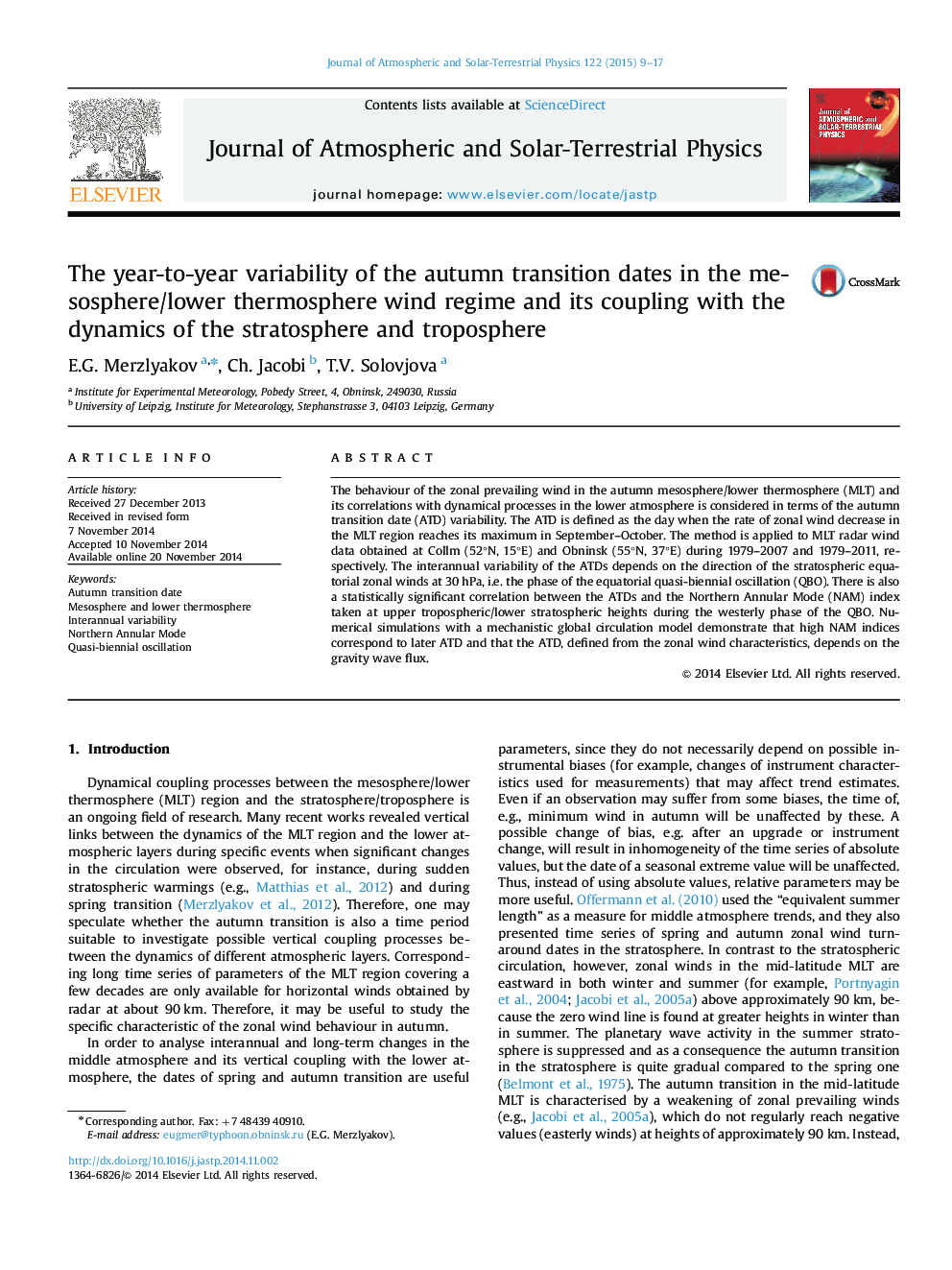| Article ID | Journal | Published Year | Pages | File Type |
|---|---|---|---|---|
| 1776498 | Journal of Atmospheric and Solar-Terrestrial Physics | 2015 | 9 Pages |
•The autumn transition date is defined from mesosphere/lower thermosphere zonal winds.•The ATD depends on the direction of the stratospheric equatorial zonal winds.•There is a significant correlation between the ATD and the NAM index.
The behaviour of the zonal prevailing wind in the autumn mesosphere/lower thermosphere (MLT) and its correlations with dynamical processes in the lower atmosphere is considered in terms of the autumn transition date (ATD) variability. The ATD is defined as the day when the rate of zonal wind decrease in the MLT region reaches its maximum in September–October. The method is applied to MLT radar wind data obtained at Collm (52°N, 15°E) and Obninsk (55°N, 37°E) during 1979–2007 and 1979–2011, respectively. The interannual variability of the ATDs depends on the direction of the stratospheric equatorial zonal winds at 30 hPa, i.e. the phase of the equatorial quasi-biennial oscillation (QBO). There is also a statistically significant correlation between the ATDs and the Northern Annular Mode (NAM) index taken at upper tropospheric/lower stratospheric heights during the westerly phase of the QBO. Numerical simulations with a mechanistic global circulation model demonstrate that high NAM indices correspond to later ATD and that the ATD, defined from the zonal wind characteristics, depends on the gravity wave flux.
